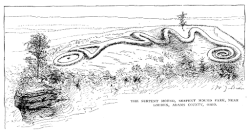
Back Архаічны перыяд у Паўночнай Амерыцы Byelorussian Pohjois-Amerikan arkaainen kausi Finnish Ère archaïque de l'Amérique du Nord French התקופה הארכאית באמריקה הצפונית HE Zaman Arkhaik (Amerika Utara) ID Архаический период (Северная Америка) Russian Archaic period (North America) SIMPLE Archaická kultúra (Severná Amerika) Slovak 美洲远古时期 Chinese
| Periods in North American prehistory |
|---|
 |

In the classification of the archaeological cultures of North America, the Archaic period in North America, taken to last from around 8000 to 1000 BC[1] in the sequence of North American pre-Columbian cultural stages, is a period defined by the archaic stage of cultural development. The Archaic stage is characterized by subsistence economies supported through the exploitation of nuts, seeds, and shellfish.[2] As its ending is defined by the adoption of sedentary farming, this date can vary significantly across the Americas.
The rest of the Americas also have an Archaic Period.[2]
- ^ Anderson, David G.; Sassaman, Kenneth E. (2012). Recent Developments in Southeastern Archaeology: From Colonization to Complexity. Washington, DC: Society for American Archaeology Press.
- ^ a b Willey, Gordon R. (1989). "Gordon Willey". In Glyn Edmund Daniel; Christopher Chippindale (eds.). The Pastmasters: Eleven Modern Pioneers of Archaeology: V. Gordon Childe, Stuart Piggott, Charles Phillips, Christopher Hawkes, Seton Lloyd, Robert J. Braidwood, Gordon R. Willey, C.J. Becker, Sigfried J. De Laet, J. Desmond Clark, D.J. Mulvaney. New York: Thames & Hudson. ISBN 0-500-05051-1. OCLC 19750309.